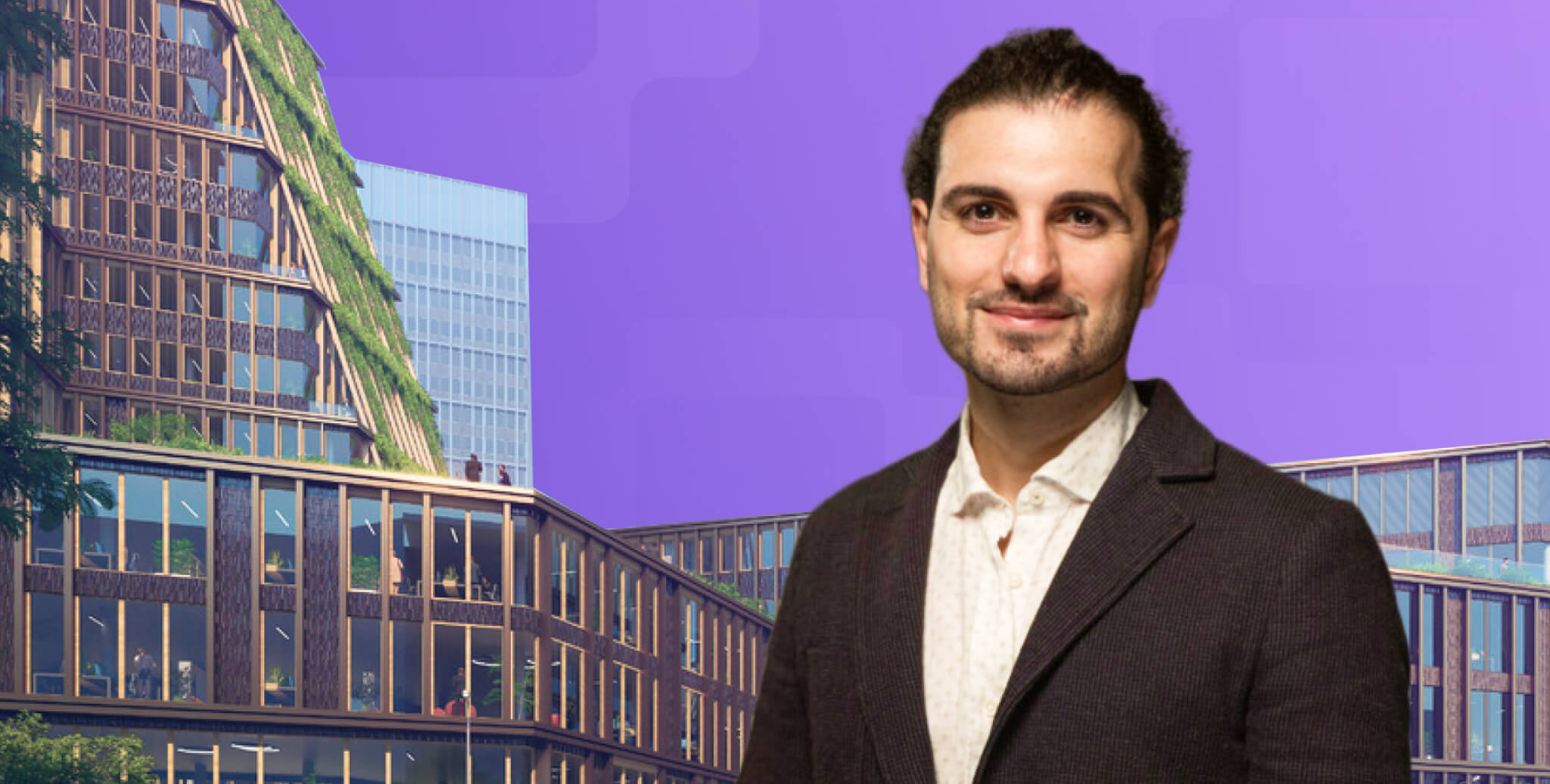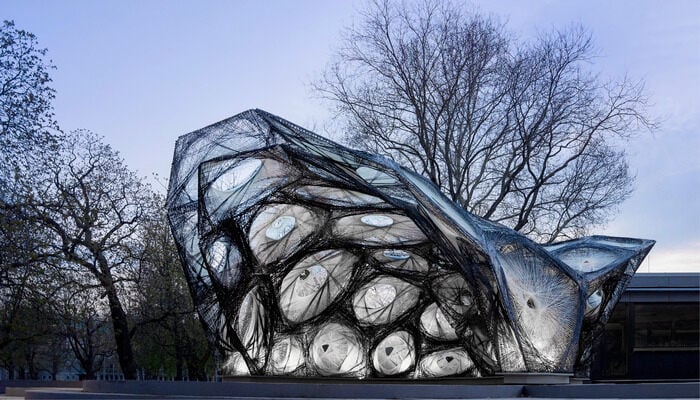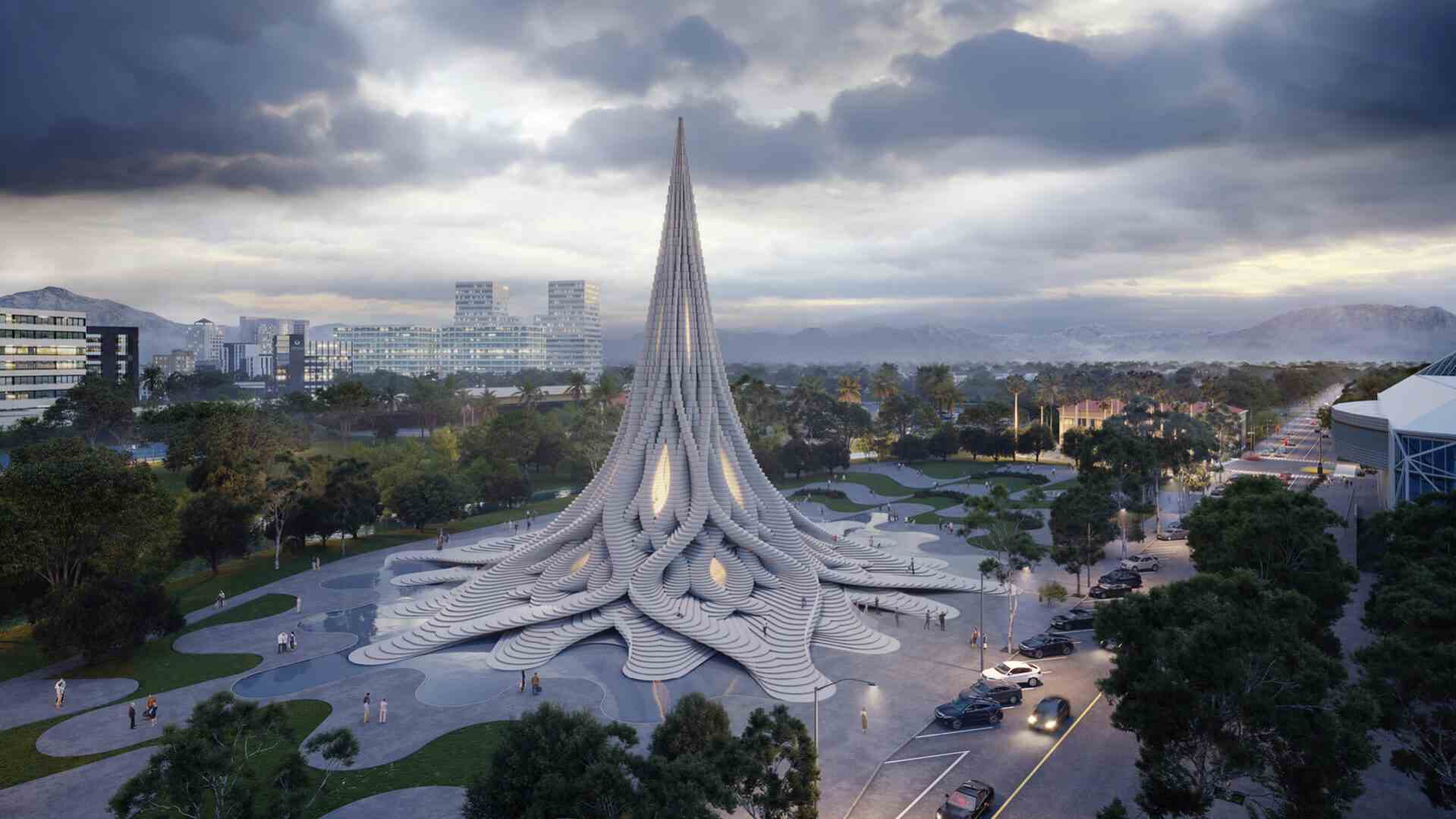Expert talks: Can Architects Specialise in Both BIM and Computational Design?

Table of Contents
Giuseppe Dotto is an Italian architect, and a BIM coordinator at UNStudio. Passionate about advanced digital design technologies, he has worked extensively with BIM, Computational Design and programming and software development for architecture since the beginning of his career.
“You are writing your ideas in code on the computer, and then your ideas happen in the computer. You're using the computer not as a pencil, but as it is as a computer, as it is actually an idea maker.”
1. You are currently a BIM coordinator at UNStudio and have previously worked as a Computational design specialist at OMA. Can you give us a quick rundown of your professional journey up to this point?
My professional journey didn't start at OMA, it was way before. I also worked in Italy for quite a while with a lot of people. But, it was after I joined OMA then pretty much everything started to change.
My professional journey has been constant. I have always been lucky to undertake what is actually my interest and align my passions with my profession. Professional journey, overall, was learning and learning and learning – never stopped doing that.
I started learning BIM at my university. I did half the course in Italy and the other half in Brazil. In the second year of my university, I met with a couple of professors that were doing this module in my university where they introduced BIM, not BIM in terms of building information modelling, but as a way of representing architecture in a smart way. The concept of having floor plan and elevation altogether was extremely revolutionary.
In my third year, my professor asked me to join him in some classes for Revit because he felt I was quite good at software. So my journey towards BIM is now completely encapsulated, completely merged with my career.
2. You are well-versed in both BIM and computational design, having worked on numerous projects of all scales and sizes. How have these digital design technologies helped you with your works?
A lot. They help me a lot. BIM is all about the information and having the possibility of integrating your daily work with computational solutions. That definitely makes you a little bit more special within the team. The fact that I've always been definitely projected to computational design, and in general the digital and design technology, helped me in understanding what was the role within one project or one office I was looking up on and how to achieve this with the skills.
It all started when I was just an architect, before I specialised. That doesn't mean that architecture is less than what I'm working now, it's just that now it'll be more sectorized. Yet, even when I was a computational design specialist at OMA or now as a BIM coordinator in UNStudio, I still totally feel like an architect. It's just a matter of specialising your approach to the architectural project as part of the team.

3. You have worked in two different roles, switching from specialising in computational design to specialising in BIM. How does BIM and computational design relate to each other?
I always used everything which concerns computational design within BIM platforms. As an architect, you can either work in BIM or just classic methods with 2D and 3D CAD. But computational design is the approach you have to the work.
I have the same approach of computational design to BIM. Someone else could have a similar approach, not to BIM but to the standard way of designing. The information that comes together with a BIM model, is also the work of the architect. Computational design is the practical thinking which can help you whether you are working with BIM or not.
I have always connected computational design to BIM because I started off with BIM, which I am still very passionate about. Computational design actually complements BIM. BIM can be used without any computational design skills. Some concepts within BIM are actually computer programming concepts. We just don’t know it.
As developers, we code directly (within BIM framework) and make computation happen to improve workflows or performances. It helps achieve better design results, better projects.
4. Can you help us understand what computational BIM is? What exactly does it entail as a specialisation?
Computational BIM is a role or a concept that we can extend. If you are a computational designer and you know BIM, you can become a computational BIM designer who approaches the BIM methodology with computational solutions and thinking. But for computational, I always refer to the hardware usage of computers mostly. That also explained the role.
For someone like me who prefers to keep working in BIM environments, they can still be computational designers using the skills within a BIM platform. So it's working within a certain workflow, in a certain thinking or approach.
5. There are still many architects who prefer a more conventional approach to designing wherein digital design tools are used only for visual presentation of their ideas. What are some other benefits that you think architects can derive from the use of these tools?
There are a lot of benefits, but I will just mention two – the two that have helped me a lot.
The first one is the time. Computational designers or people approaching certain work using a computational approach can produce results in an extremely fast way.
The second benefit is the precision of the results. Computational design also helps in automating workflows. It is not simple automation, but studying and having the work be replicable by a computer which can work in speed and precision.
If there is an error, it is not human error but because of the thinking or the idea behind the concept or how it has been written.
6. You have worked on multiple projects at both OMA and UNStudio. Can you tell us about one project you worked on in particular where computational BIM was extensively used?
I use computational BIM in almost all my projects. It doesn’t matter the scale nor the size.
But here is a good example – the new Feyenoord Stadium. It is a stadium in Rotterdam, Netherlands. In all of our approaches, we managed to integrate computational design not just from a proper design point of view but also for coordination.

First, the study of facades. We used a computational approach for studying a facade in a way that, first of all, was tasteful and second, it was optimised in construction, reducing cost. As architects, we want to optimise design as well as the cost. We studied portions of the facade during the design study and development. We worked with other consultants and professionals within and outside of OMA.
Coordination played an important role here. Computational design helped a lot in the exchange of data. The computational designers that were sharing points, vectors, information and the overall geometry studies with each other which were preserved through the project.
The second example (in the same project) is the overall design of the seats. It had to follow a structural element which happened in collaboration with the structural engineer. They were giving us the shape and whenever they changed for any reason, the architect, us, were able to adapt our design not manually, but just as a consequence of their design output.
Another example is the roof. Usually, stadiums don't have an easy roof structure solution. We try to panelize the structure. There may be solar panels, etc. Depending on the design, computational design can reduce the work. You do it once approaching the idea, and then the connection between the structural model, the trusses, the architectural model and the cladding are all connected.
Check out this blog to learn more about how computational design is used in architecture.
7. Coming back to computational BIM, you are also familiar with Revit API which allows you to create custom plugins to improve the workflows. Is it a helpful skill for an architect?
For me, it is fundamental, so I cannot say no. It is a helpful skill because you start looking at the program you are using for your drawings, not as a simple user, but you start to integrate all of the needs that this program might have.
For example, your requirements that the program eventually doesn't have, you can integrate through a script.
The type and size of the projects by companies such as UNStudio, OMA, BIG bring about an endless requirement of design solutions. Having the possibility of enhancing the capabilities and the potentiality of the software for doing it is important. The architect is no longer the only user of the computer, but has become a little bit of the programmer of his/her own tool.
It is understandable why not all architects have the skills. We need patience and the topic itself is not easy. I personally think that every team or an office should have at least one person capable of stretching the capabilities of software the company is using.

8. You've been an active participant in the development of the Master Computational Design Course at Novatr, and will also be mentoring the young architects and engineers who enrol. What inspired you to take up this initiative?
I’d say it is my career. I started off teaching Revit (in university) so my first approach to BIM was indeed by teaching. During my career with my skills, I found out how no matter what the office was, I was always in a position to design, develop some tools, some solutions and definitely help the colleagues. I have even helped them learn the software.
In addition, I also have my personal blog where I start sharing just concepts around the AEC industry, how to approach this componential thinking to your daily work. I figured out that sharing possibly whenever you have the skills is the best way to continue learning.
It helps me see all the multidimensional skills and analyse different input from learners, but also from colleagues, from other teachers in Novatr It helps you in improving yourself by broadening your views and perspectives. I've been inspired by seeing this teaching for learning as a constant all over my career.

9. Any advice for young professionals interested in learning this advanced skill? What does a skill like Computational BIM mean for them in terms of career growth and opportunities?
I would say this is a perfect career path for the people who want to enter the rabbit hole, digging and discovering more and more. It is also the career you can give an individualised touch, i.e feeling all of your work as more personal and not inserted or hidden inside of an overall team.
It is also a lot of fun, but also entails a lot of challenges. Most of the time I feel that the challenge I have out of scripting or coding a certain solution are more difficult than some other challenge I had for design. But, it keeps your brain always on. It's a perfect way of being an architect who is drawing with his mind rather than with his hand.
You are writing your ideas in code on the computer, and then your ideas happen in the computer. You're using the computer not as a pencil, but as it is as a computer, as it is actually an idea maker.
Giuseppe is part of our panel of expert mentors who prepare the content for the Master Computational Design Course. As Giuseppe mentioned, it is not easy but it is definitely fun and worth the challenge.
So head to the course page to register now and master this complex methodology for real-world application.

 Thanks for connecting!
Thanks for connecting!


/827x550/images/blog/blogHero/Ami_Nigam_Oneistox.jpg)
/827x550/images/blog/blogHero/KritikaKharbanda_0710_Image00.jpg)
.png)




